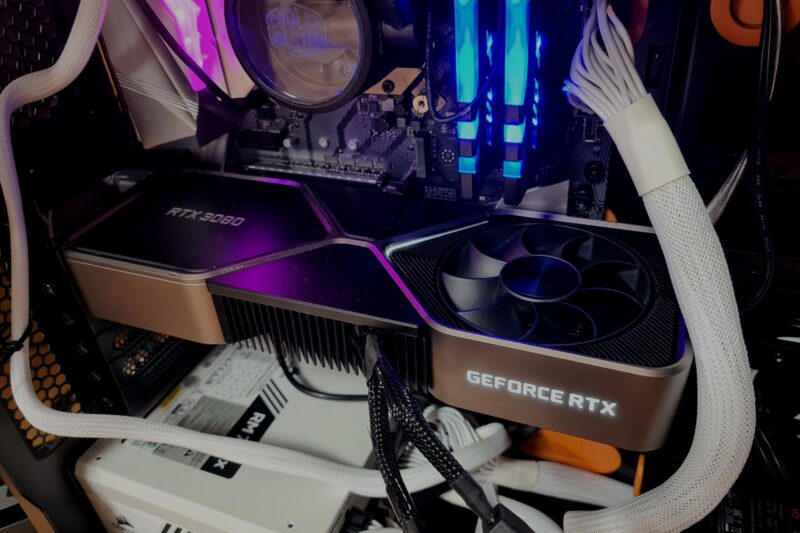Scaling, in the context of digital displays and graphics processing, is a crucial aspect of providing a seamless visual experience.
It doesn’t matter if you’re a gamer, a professional video editor, or just someone who enjoys a crisp, clear image on your screen, the question of where to perform scaling – on the GPU (Graphics Processing Unit) or on display – is a significant one.
Today, I will explore each approach, helping you make an informed decision based on your specific needs and setup.
Scaling and Its Importance
Scaling is the process of adjusting the size of an image or video content to fit a particular display resolution. This can involve either upscaling (increasing resolution) or downscaling (decreasing resolution).
Why is Scaling Important?
- Image Quality: Proper scaling ensures that images and videos appear sharp and clear, irrespective of the screen’s native resolution.
- Performance: Effective scaling can optimize the performance of your system, ensuring smooth playback and interaction, especially in graphics-intensive tasks like gaming or video editing.
- User Experience: Scaling plays a pivotal role in user experience, ensuring that content is rendered correctly across various devices and screen sizes.
The Case for GPU Scaling
GPU scaling involves using the graphics card to adjust the resolution of the content before it is sent to the display.
Advantages
- Control and Customization: Graphics cards often come with dedicated software that allows for more granular control over the scaling process, including aspect ratio adjustments and specific resolution settings.
- Performance in Gaming: For gamers, graphics card scaling can be crucial. It allows games to run at different resolutions while maintaining the monitor’s native resolution, often leading to better performance.
- Consistency Across Displays: GPU scaling ensures that the scaling quality and method remain consistent, irrespective of the monitor or display being used.
Potential Drawbacks
- Resource Intensive: Scaling on the GPU can be resource-intensive, especially for older or less powerful graphics cards, potentially affecting overall system performance.
- Increased Latency: In some cases, GPU scaling can introduce a slight delay, as the scaling process takes time before the image is sent to the monitor.
The Case for Display Scaling
Display scaling, on the other hand, relies on the monitor or display device to adjust the resolution of the incoming signal.
Advantages
- Offloads GPU Tasks: By handling scaling, the display offloads this task from the GPU, potentially freeing up resources for other processes.
- Reduced Latency: Since the scaling is done at the display level, it can reduce the latency introduced by GPU scaling, which is particularly important for fast-paced gaming.
- Advanced Display Technologies: Many modern displays come equipped with advanced scaling technologies that can potentially offer superior scaling quality compared to older GPUs.
Potential Drawbacks
- Limited Control: Users typically have less control over the scaling process when it’s done by the display.
- Variable Quality: The quality of display scaling can vary significantly between different monitor models and brands.
- Inconsistency Across Different Displays: The scaling experience can vary if you switch between different monitors or display devices.
Comparing GPU and Display Scaling in Different Scenarios
To make a well-informed decision, it’s essential to consider how each scaling method performs in various scenarios.
For Gamers
- GPU Scaling: Ideal for achieving optimal gaming performance, especially when playing games at resolutions different from the monitor’s native resolution.
- Display Scaling: Can be beneficial if the monitor has a high-quality scaler and you’re looking to minimize latency.
For Professional Work
- GPU Scaling: Offers more control, which can be crucial for tasks that require precise scaling, such as video editing or graphic design.
- Display Scaling: Might be suitable for general office work where scaling demands are not as stringent.
For General Use
- GPU Scaling: Offers a consistent experience across different displays, which can be important if you frequently connect to different monitors.
- Display Scaling: A good choice if you primarily use one monitor with a high-quality scaler and want to reduce the load on your GPU.
Balancing Performance and Quality
When deciding between graphics card and display scaling, it’s not just about choosing one over the other; it’s about balancing performance and quality to suit your needs.
Performance Considerations
- System Resources: Graphics card scaling can be more demanding on your system. If you have a high-end GPU, this might not be a concern, but for mid-range or older systems, it’s something to consider.
- Latency: For activities like competitive gaming, latency is a key factor. Display scaling can offer an edge here by reducing the processing time before the image is displayed.
Quality Considerations
- Image Clarity: The quality of scaling algorithms varies. Some GPUs provide superior scaling quality, especially in high-end models.
- Consistency: GPU scaling offers consistency across different displays, which is crucial if you need a uniform experience across multiple setups.
Finding the Right Balance
- For high-end systems where performance is less of a concern, GPU scaling might offer the best balance, providing both quality and control.
- For systems where resources are limited or latency is a critical factor, display scaling might be the preferable option.
Technical Aspects of GPU vs. Display Scaling
To fully appreciate the differences between GPU and display scaling, a deeper look into the technical aspects can be enlightening.
How Scaling Works
The graphics card takes the original image or video content and rescales it to match the monitor’s resolution. This process involves complex algorithms that can enhance or degrade the image quality, depending on the GPU’s capability.
GPU scaling can be adjusted through software provided by the graphics card manufacturer, offering various options like maintaining aspect ratio or full-screen stretch.
How Display Scaling Works
- Display scaling is handled by the monitor’s internal processing unit. It adjusts the incoming signal to fit the screen’s native resolution.
- The quality of this scaling depends heavily on the monitor’s hardware and can vary widely between different models and brands.
Practical Tips for Choosing Between GPU and Display Scaling
Here are some practical tips to help you decide which scaling method to use:
- Know Your Hardware: Understand the capabilities of your GPU and monitor. High-end graphics cards and monitors with good internal scalers will give you more flexibility in your choice.
- Consider Your Primary Activities: If you’re a gamer, you might lean towards GPU scaling for better performance. If you’re a professional using applications that are not as graphics-intensive, display scaling could suffice.
- Experiment with Settings: Sometimes the best way to decide is to try both and see which one works better for your specific needs.
Future Trends and Developments
The landscape of scaling technologies is continuously evolving. Here’s a glimpse into what the future might hold:
AI and Machine Learning
Emerging technologies like AI-based scaling could revolutionize how both GPUs and displays handle scaling, offering superior image quality with minimal performance impact.
Integrated Solutions
We might see more integrated solutions where GPUs and displays work more cohesively to optimize scaling, blending the benefits of both methods.
FAQs
Which is Preferable for Scaling, the Monitor or the GPU?
The choice between monitor (display) scaling and GPU scaling depends on your specific needs. Graphics card scaling offers more control and is often better for gaming, while display scaling can be more efficient for general use and is less taxing on your system resources.
Is It Advisable to Turn On GPU Scaling?
Turning on GPU scaling is advisable if you need more control over image quality and aspect ratios, especially in gaming or professional graphics work. However, it can be more demanding on your GPU.
Can GPU Scaling Impact Frame Rates?
Yes, scaling can impact frame rates as it requires additional processing power. The extent of this impact varies depending on the GPU’s capability and the game’s requirements.
What Scaling Mode Should Gamers Opt For?
For gaming, a scaling mode that maintains the aspect ratio is typically preferred. This ensures that the game’s graphics are not stretched or distorted, preserving the intended visual experience.
Does GPU Scaling Introduce Lag?
Scaling can introduce a slight lag, as it adds an extra processing step before the image is displayed. This lag is usually minimal but can be noticeable in fast-paced gaming scenarios.
How Does GPU Scaling Affect Input Lag?
It can potentially increase input lag slightly due to the additional processing time required for scaling the image. This might be noticeable in situations where split-second reactions are crucial.
Can Full GPU Utilization Lead to Increased Input Lag?
Full utilization itself does not directly cause increased input lag. However, if the graphics card is maxed out, it might struggle to process inputs efficiently, which can indirectly result in lag.
Is It Better to Set PhysX Processing to the CPU or GPU?
Setting PhysX processing to the graphics card is generally better if you have a powerful graphics card, as it can handle these tasks more efficiently than the CPU.
However, if your graphics card is already under heavy load, setting PhysX to the CPU can help balance the performance.
Does Display Scaling Have an Impact on System Performance?
Display scaling generally has a minimal impact on system performance as it is handled by the monitor itself. It can be a more efficient option, especially for systems with less powerful graphics cards.
Final Words
Choosing between GPU scaling and display scaling boils down to understanding your specific needs and the capabilities of your hardware. For gamers and professionals who demand precise control and performance, GPU scaling might be the way to go.
However, if you’re looking to minimize latency or offload tasks from your GPU, display scaling could be more beneficial, especially with modern, high-quality monitors. Keep in mind that the ideal choice may vary depending on your hardware setup, the type of content you’re viewing or creating, and your personal preferences.
Weighing the pros and cons of each method in the context of your specific use case can ensure an optimal viewing experience that caters to your needs.

